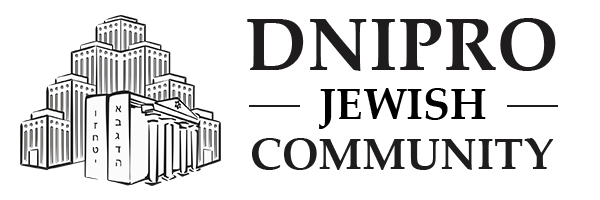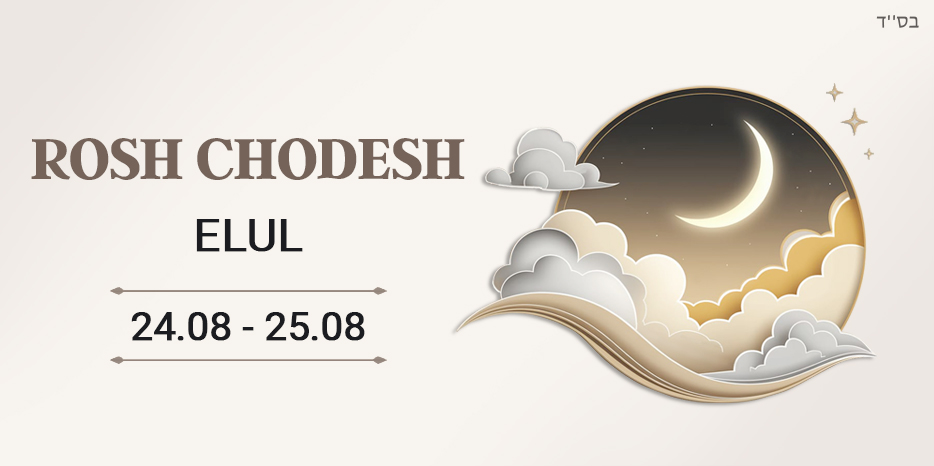Elul is the 12th and final month in the Jewish calendar (the sixth month counting from Nisan). Leading up to the High Holidays, Rosh Hashanah and Yom Kippur, it is a month that connects the past year with the coming year—a time when we reflect on where we stand and where we should be going.
Every day of Elul we blow the shofar, give additional charity, and recite special Psalms. In the final days of Elul, we rise early to say Selichot, prayers asking G‑d for forgiveness.
Jewish History
Moses ascends Sinai for 3rd 40 days (1313 BCE)
On the early morning of the 1st of Elul of the year 2448 from creation (1313 BCE) Moses ascended Mount Sinai, taking with him the stone tablets he had hewn by divine command (see “Today in Jewish History” for yesterday, Av 30), for G-d to re-inscribe the Ten Commandments. On the mountain, G-d allowed Moses to “see My back, but not My face” (which Maimonides interprets as a perception of G-d’s reality but not His essence) — the closest any human being ever came to knowing G-d — and taught him the secret of His “Thirteen Attributes of Mercy” (Exodus 33:18-34:8).
Moses remained on the mountain for 40 days, until the 10th of Tishrei (Yom Kippur), during which time He obtained G-d’s whole-hearted forgiveness and reconciliation with the people of Israel following their betrayal of the covenant between them with their worship of the Golden Calf. This was the third of Moses’ three 40-day periods on Mount Sinai in connection with the Giving of the Torah. Ever since, the month of Elul serves as the “month of Divine mercy and forgiveness.”
Moroccan Jewry Saved From Portuguese Conquest (1578)
In 1578, a Portuguese army led by King Sebastian I joined forces with the deposed Moroccan Sultan Abdallah Mohammed, who desired to regain the throne from his uncle, Abd al-Malik. Victory of the Portuguese king would inevitably lead to the infamous Inquisition taking hold in Morocco. On August 4, corresponding to 1 Elul, the Portuguese army was defeated in what is known as the Battle of the Three Kings. A number of Moroccan communities would commemorate this date each year as a day of celebration, thanking G‑d for His salvation.
Prophecy of Haggai Encouraging Building of the Second Temple (353 BCE)
On this day, the prophet Haggai received a divine message to pass on to “Zerubavel son of She’altiel ruler of Judah and Joshua son of Jehozadak the High Priest” (Haggai 1:1), instructing them to continue their efforts to build the Second Temple, whose construction had been halted some seventeen years prior. (See entry for 21 Tishrei for a similar prophecy transmitted by Haggai seven weeks later.)
Laws and Customs
Rosh Chodesh Observances
Today is the ашкіе of the two Rosh Chodesh (“Head of the Month”) days for the month of Elul (when a month has 30 days, both the last day of the month and the first day of the following month serve as the following month’s Rosh Chodesh).
Special portions are added to the daily prayers: Hallel (Psalms 113-118) is recited — in its “partial” form — following the Shacharit morning prayer, and the Yaaleh V’yavo prayer is added to the Amidah and to Grace After Meals; the additional Musaf prayer is said (when Rosh Chodesh is Shabbat, special additions are made to the Shabbat Musaf). Tachnun (confession of sins) and similar prayers are omitted.
Many have the custom to mark Rosh Chodesh with a festive meal and reduced work activity. The latter custom is prevalent amongst women, who have a special affinity with Rosh Chodesh — the month being the feminine aspect of the Jewish Calendar.
Elul Observances
As the last month of the Jewish year, Elul is traditionally a time of introspection and stocktaking — a time to review one’s deeds and spiritual progress over the past year and prepare for the upcoming “Days of Awe” of Rosh HaShanah and Yom Kippur.
As the month of Divine Mercy and Forgiveness (see “Today in Jewish History” for Elul 1) it is a most opportune time for teshuvah (“return” to G-d), prayer, charity, and increased Ahavat Yisrael (love for a fellow Jew) in the quest for self-improvement and coming closer to G-d. Chassidic master Rabbi Schneur Zalman of Liadi likens the month of Elul to a time when “the king is in the field” and, in contrast to when he is in the royal palace, “everyone who so desires is permitted to meet him, and he receives them all with a cheerful countenance and shows a smiling face to them all.”
Specific Elul customs include the daily sounding of the shofar (ram’s horn) as a call to repentance. The Baal Shem Tov instituted the custom of reciting three additional chapters of Psalms each day, from the 1st of Elul until Yom Kippur (on Yom Kippur the remaining 36 chapters are recited, thereby completing the entire book of Psalms). Click below to view today’s Psalms.
Elul is also the time to have one’s tefillin and mezuzahs checked by an accredited scribe to ensure that they are in good condition and fit for use.
Good Year Greetings
From the beginning of Elul and throughout the High Holiday season, we include the blessing “May you be inscribed and sealed for a good year” (Leshanah tovah tikateiv veteichateim) in letters and greetings to one another.
Daily Thought
The King and I
The month before Rosh Hashanah, taught Rabbi Schneur Zalman of Liadi, is a precious month. For thirty days, you can find the Ultimate King awaiting you outside the city, on a rustic path that winds through an empty meadow.
What’s the advantage of meeting the King in a meadow?
Because when you meet the King in His palace of the Days of Awe from Rosh Hashanah to Yom Kippur, much stands between you and Him—the carpet, the throne, the royal robes, the protocol, the language you must use, the awe and magnificence of the palace…
But in the field, the King wears blue jeans. And so do you. He even greets you with a smile, and expresses His delight that you came out to see Him.
Now it’s just you with the King.




